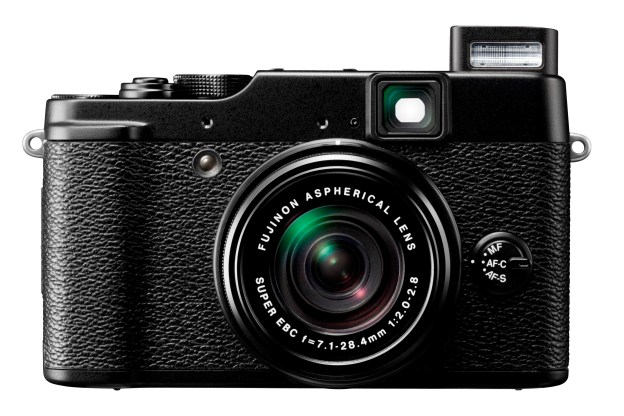 Fujifilm’s FinePix X100 made waves in the photography community this year, becoming something of a legend before its release. The very retro camera has been the subject of both contempt and adoration, but it’s nothing if not innovative. As it turns out, the X100 was only an introduction to the X series, and now Fujifilm has released details about its newest addition to the lineup.
Fujifilm’s FinePix X100 made waves in the photography community this year, becoming something of a legend before its release. The very retro camera has been the subject of both contempt and adoration, but it’s nothing if not innovative. As it turns out, the X100 was only an introduction to the X series, and now Fujifilm has released details about its newest addition to the lineup.
The X10 is the X100’s follow up, and Fujifilm tells us the new camera is a little less for the professional set and rather for the “prosumer” and enthusiast category. This leads us to believe it has something of a shallower learning curve than its predecessor, reportedly without sacrificing quality. The X10 features a larger, 2/3-inch 12-megapixel EXR CMOS sensor and a bright Fujinon 4x manual zoom F2.0-F2.8 wide-angle lens.

It features full manual dial control of aperture, zoom, shutter, and exposure, as well as shooting RAW and RAW + Jpeg. Fujifilm tells us the sensor has been improved to reduce noise at extreme ISOs, and the X10’s ISO range is 100 to 12,800.
The biggest difference between the X100 and the X10 is the new camera’s lack of the infamous hybrid viewfinder. This feature was easily the most-lauded and most impressive of the X100, but won’t be included in the next X-series addition. Instead it will be replaced by a traditional optical viewfinder.
Fujifilm emphasizes how fast this camera is, saying the whole concept of the X10 is to “never miss the shot.” Shutter-release lag time is approximately .01 seconds, and we were told auto-focus speed is quick and precise. We hope this last part is true, as it was one of our (and other reviewers’) major complaints, most specifically in poor lighting.

The X-series is an exciting lineup, deviating from some of the retro and MFT models we’re seeing with less consumer-friendly features and more technology-focused takes on traditional elements (which can be hit or miss) of photography. Given the cult-like following that shadowed the release of the X100, we figured a side-by-side comparison of the X10 and its predecessor might interest you. The X10 will be available in November, but pricing has yet to be announced.

Editors' Recommendations
- Fujifilm’s most-hyped camera has just started shipping
- The best point-and-shoot cameras
- Fujifilm X100V vs. X100F: Should you upgrade to Fujifilm’s newest rangefinder?
- The Fujifilm X-T4 looks flawless. Is it the perfect camera?
- The Fujifilm X100V is loaded with tech it doesn’t need — and that makes it great


